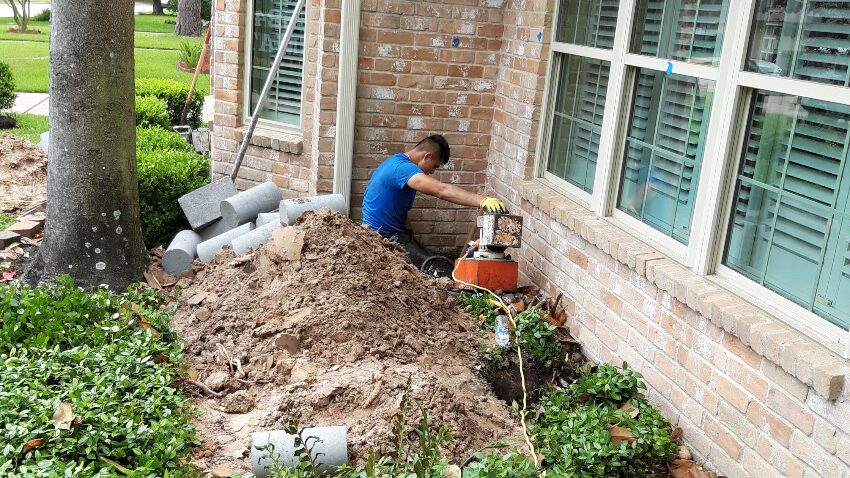Why It’s Important to Comply with Pier Spacing Requirements
In a nutshell, complying with pier spacing requirements can help the contractor ensure the long-term durability of the foundation. Regardless of the type of home you have, the importance of a solid and structurally sound foundation cannot be denied.
An improperly built or repaired foundation could lead to major structural issues over time. For example, spacing piers too far from each other, placing them in the wrong locations, or not sizing them correctly means they won’t be able to adequately support the weight of the home. This may create weak areas under the foundation, causing the concrete slab and subfloor to fail. This is how structural damage begins.
In order to prevent this type of damage to residential buildings, a series of building regulations have been developed. But contrary to popular belief, the building codes for residential foundations don’t provide some complex how-to guides. Instead, they make available a series of recommendations that geotechnical experts, architects, engineers, builders, and foundation repair contractors should consider and adjust according to the local building code, type of soil or backfill used, structural loads, and climate.
Therefore, the main role of the residential building codes is to indicate a series of parameters that are meant to ensure the structural stability and durability of a home. In addition to a specific depth, width, and thickness requirements, pier spacing is another essential factor that specialists must consider in order to evenly distribute the live and dead loads across the footprint area of a home and prevent damage even during severe weather.
Assessing General Pier Spacing Requirements
In addition to the type of soil or backfill, structural loads, and weather conditions, pier spacing specifications will depend on a few other factors, such as the square footage of the home, floor plan, location of any openings, types of piers used, whether the home has one or two stories, and whether it includes any monolithic components or not. Below are a few general pier spacing guidelines that you should be aware of before any work commences on your foundation.
- Piers should be spaced at an average of 5 to 6 feet apart for a two-story home and 8 to 10 feet apart for a single-story structure;
- In general, the piers that support the framing of the home must be installed at a maximum distance of 120 inches, center to center, under the main rails, and at a maximum distance of 24 inches from both ends;
- To ensure that the weight of the home is evenly distributed across the entire foundation, the piers should be placed at regular intervals around the perimeter of the foundation as well as underneath the open space inside the outer walls; for appropriate support, a pier should also be installed under every corner of the home;
- Wall setbacks typically require a few additional piers, which should be placed closer to each other throughout the corresponding area under the home ;
- Pier spacing should be done as accurately as possible, according to the structural plan in order to prevent foundation failures in the future;
- All newly installed piers must be driven to a “point of refusal” to adequately transfer structural loads to a more competent load-bearing stratum.
Usually, the larger the home, the more piers it will need. However, larger piers are able to support more weight compared to smaller piers. As a result, when larger diameter piers are specified, fewer piers will be required. Even though experts typically consider soil conditions and load requirements to determine pier size and spacing, a good rule of thumb is to space piers at a distance of 3x their diameter, center to center, regardless of their size. On the other hand, pier size and spacing may be affected by a few additional factors, such as seasonal flooding, hurricane wind loads, and seismic potential. Since determining the correct pier size and spacing is a complex problem that depends on so many variables and involves complex calculations, it’s best left to the pros.
For any foundation-related work in the Houston-Galveston area, you can turn to our professionals at Allied Foundation Repair. For more than four decades, we’ve provided homeowners with a wide range of foundation repair services, whether addressing different foundation failures or for lifting and/or leveling their homes. Furthermore, our foundation repair services are backed up with a transferable warranty, which will protect not only your investment but also the investment of future homeowners if you ever decide to sell your home. Whether you want to learn more about our foundation repair services or you need immediate help from an experienced foundation repair team member, contact Allied Foundation for a free foundation repair estimate!

